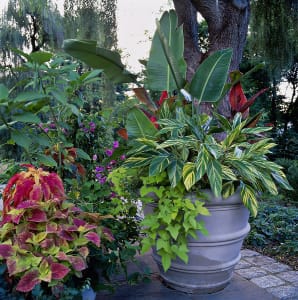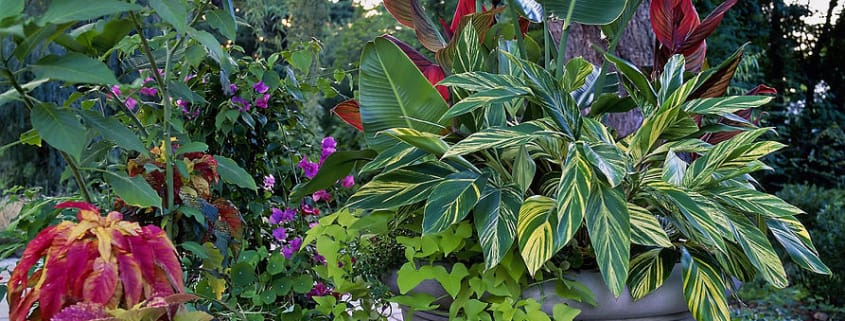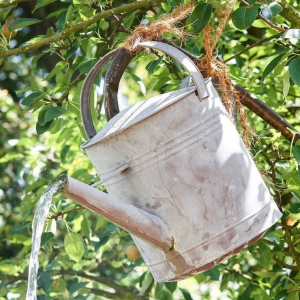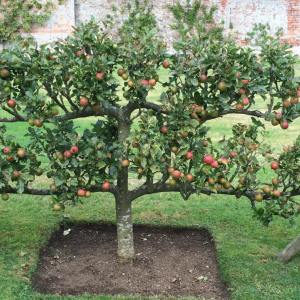Success with pots
Keith Mundy
 With the ever-increasing use of our outdoor space, the use of pots as a growing solution is becoming far greater than in previous times, so here are some hints on how to successfully manage this form of gardening.
With the ever-increasing use of our outdoor space, the use of pots as a growing solution is becoming far greater than in previous times, so here are some hints on how to successfully manage this form of gardening.
It’s most important, initially, to decide what you want the pots and the plants to achieve. Are they to be used for growing vegetables, annual colour, a perennial or shrub? Or perhaps a screening plant to hide a shed or some unsightly part of your landscape?
The pot size is absolutely the most crucial selection as a pot too small for the plant will cause it to dry out quickly, blow over in the wind or not be large enough to contain sufficient nutrient to keep the plant healthy.
Generally, glazed pots are the best as there are many colours that suit the colour scheme of the home and they have a better moisture-holding capability than other styles. Terracotta pots are very stylish but have a tendency to dry out, so seal the inside of the pot with a terracotta sealant.
When selecting a pot for a plant that’s going to grow and need re-potting, use a straight-sided or v-shaped pot so the plant can be removed easily. A plant in a belly-shaped pot is nigh on impossible to re-pot without causing serious disturbance to the root system or damaging the pot.
When selecting the plant to be used, consider the eventual size of the plant—the larger the plant grows, the larger the pot should be. A plant to be used for screening should be in a pot that will also act as an anchor in a windy site. Too small a pot will simply just blow over and in most cases break.
If you are growing annuals, herbs or vegetables, a shallow pot will suffice as they are all generally shallow rooting and do not need a great depth of soil.
The potting mix used should be a premium mix with some slow-release fertiliser and some water storage crystals. There are many types of mixes out there and I can guarantee that the cheaper the mix the lesser the quality.
Cheaper mixes are basically just pine bark and if you are growing vegetables and annual flowers you will need to fertilise and water more often as these mixes do not have any moisture or nutrient-holding capabilities. The cheaper mixes will be of no benefit to the plants after a season or two.
Watering and fertilising is of absolute importance. Vegetables and annual flowers will need watering several times a week and fertilising every ten days or so with a liquid fertiliser like a fish- or seaweed-based fertiliser. Shrubs and longer-living plants also need watering and fertilising on a regular basis, but add a specific slow-release fertiliser for the particular group of plants you have used. Do this three or four times a year as well as the liquid food on a monthly basis. During the cooler months this can be cut back as the plants are not actively growing.
Just a few other things to remember: check from time to time that the drainage holes haven’t become blocked by roots, rotate the pots to get an even, all-over growth, and prune when necessary.


